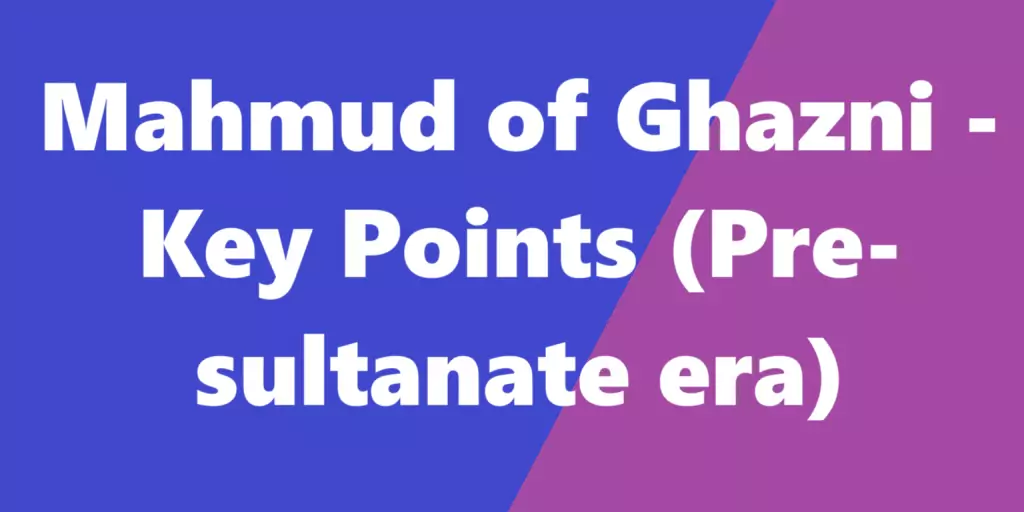Mahmud of Ghazni Notes GK: Mahmud was the ruler of the Central Asian Ghaznavid Empire from 998 to 1030 CE. He is known for leading military campaigns into India. Mahmud of Ghazni is a significant historical figure to learn about for exams like the UPSC because he was a key part of India’s medieval past. His army’s victories started a long time of Muslim governance over much of northern India.
| Mahmud of Ghazni |
|---|
| Reign: 998 – 1030 AD |
| Founder of: Ghaznavid dynasty |
| Military Expansion: Afghanistan, Iran, Northwest India (Punjab) |
| Most famous raid: Somnath temple in Gujarat (1027 AD) |

Background
- In 977 AD Alptigin’s son-in-law’s son-in-law Sabuktigin ascended the throne of Ghazni.
- In 986 AD, there was a battle with King Jaipala of the Hindu Shahi dynasty at Khuja and Jaipala was defeated.
- Jayapala was miserably defeated in Sabuktagin’s second attack in 988 AD.
- Sabuktagin died in 997 AD.
- Then Islamia sat on the throne.
- But Mahmud, Sabuktagin’s eldest son, ousted his younger brother and ascended the throne in 998 AD.
Read More: Gauda kingdom – King Shashanka
Mahmud’s invasion of India
Sultan Mahmud invaded India 17 times between 1000-1027. Some of the famous expeditions are given below table.
| Year | Details |
|---|---|
| 1001 | Defeated Jaipal in the Battle of Peshawar. |
| 1009 | Mahmud defeated Jaipala’s son Anandapala in the battle of Waihind. |
| 1007-1008 | Against Nowash Shah of Kashmir. |
| 1009 | Against Narayana Raja of Rajasthan. |
| 1012-1013 | Trilochana defeated the Shahi dynasty and took over. |
| 1014 | Expedition to the ‘Chakra Swami’ temple at Thaneswar. (The statue was a bronze statue of Vishnu). |
| 1015-1016 | Against the King of Kashmir. |
| 1018 | Sacks Kanauj and Mathura |
| 1020-21 | The Pratihara king was defeated and killed the governor. |
| 1025-26 | The sixteenth expedition was to Gujarat. Mahmud looted the Somnath temple in Gujarat. |
| 1027 | Mahmud’s last campaign against the Jaths. |
Read More: Pushyabhuti Dynasty
Significance
- Firdausi, the poet of Sultan Mahmoud, composed ‘Shahnama’ containing 1000 poems.
- In 1017, Alberuni, the author of ‘Tahqiq-i-Hind’ came to India with Mamud.
- His status in the Islamic world increased for breaking the idols of Hindu gods and goddesses.
- Mahmud was called ‘Batsikan‘ or destroyer of idols. Mamud died in 1030 AD.
Summary
Mahmud was succeeded by his son, Mas’ud I. Mahmud’s raids into India marked the start of a series of Islamic invasions that would have a major impact on the Indian subcontinent’s history and culture.
